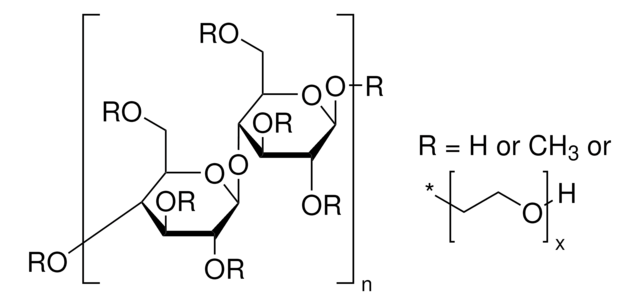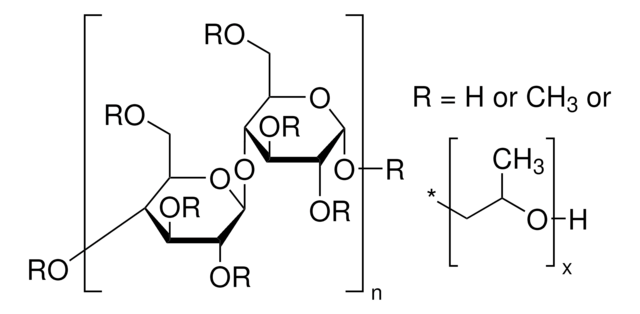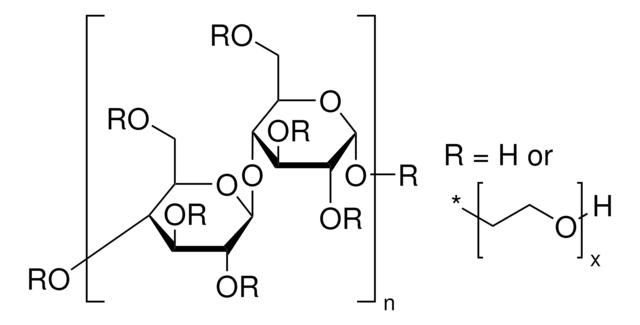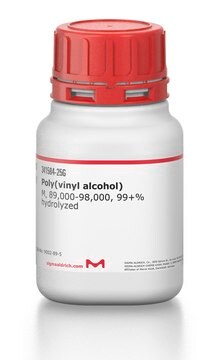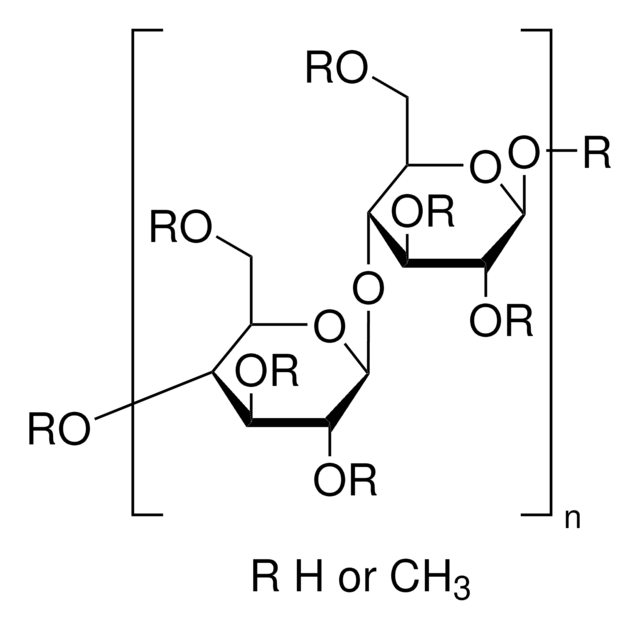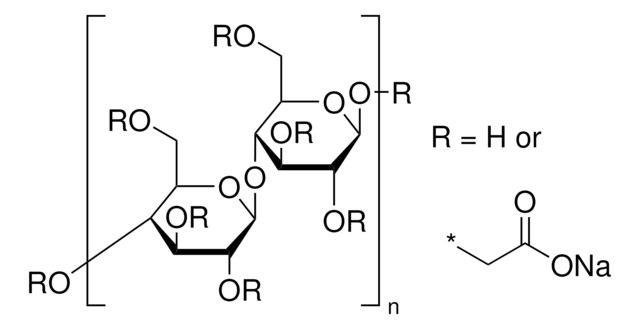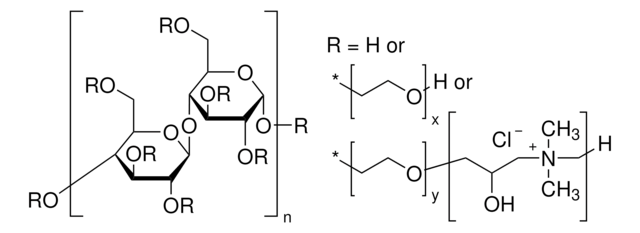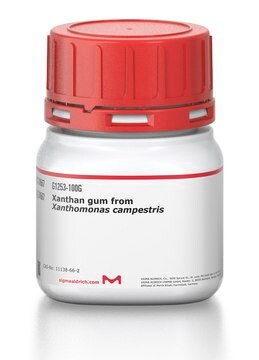Wszystkie zdjęcia(1)
Kluczowe dokumenty
93800
Tylose® MH 300
viscosity 150-450 mPa.s, 2 % in H2O(20 °C)
Synonim(y):
Methyl 2-hydroxyethyl cellulose
Zaloguj sięWyświetlanie cen organizacyjnych i kontraktowych
About This Item
Polecane produkty
Formularz
powder
Poziom jakości
kolor
white to faint beige
lepkość
150-450 mPa.s, 2 % in H2O(20 °C)
temp. przejścia
flocculation range 60-90 °C (0.5 wt. %)
rozpuszczalność
H2O: soluble 20 mg/mL
Szukasz podobnych produktów? Odwiedź Przewodnik dotyczący porównywania produktów
Zastosowanie
Tylose® MH 300 and Tylose® MH 1000, methyl-hydroxyethyl cellose ethers (MHEC), are water-soluble non-ionic polymers used in materials to provide water retention, binding, thickening, film forming and colloid properties.
Inne uwagi
To gain a comprehensive understanding of our extensive range of Polysaccharides for your research, we encourage you to visit our Carbohydrates Category page.
Informacje prawne
Tylose is a registered trademark of SE Tylose GmbH & Co. KG
Ta strona może zawierać tekst przetłumaczony maszynowo.
Kod klasy składowania
11 - Combustible Solids
Klasa zagrożenia wodnego (WGK)
WGK 1
Temperatura zapłonu (°F)
Not applicable
Temperatura zapłonu (°C)
Not applicable
Środki ochrony indywidualnej
Eyeshields, Gloves, type N95 (US)
Wybierz jedną z najnowszych wersji:
Masz już ten produkt?
Dokumenty związane z niedawno zakupionymi produktami zostały zamieszczone w Bibliotece dokumentów.
Klienci oglądali również te produkty
Roland Adden et al.
Analytical chemistry, 78(4), 1146-1157 (2006-02-16)
Hydroxyethylmethyl celluloses (HEMC, DS(Me) 1.46-1.66, DS(HE) = 0.14-0.17) have been analyzed with respect to their methyl and hydroxyethyl pattern in the glucosyl units and along the polymer chain. Methyl groups were located by GLC/MS after direct hydrolysis, reduction, and acetylation
Su Jeong Ban et al.
Food and chemical toxicology : an international journal published for the British Industrial Biological Research Association, 50(5), 1716-1721 (2012-03-06)
The effect of hydroxyethyl methylcellulose (HEMC) with different viscosities on the glucose metabolism and antioxidative defense system in high fat-fed mice was investigated. The mice were randomly divided into five dietary groups: normal control diet (NC), high fat diet (HF)
Su Jeong Ban et al.
Food and chemical toxicology : an international journal published for the British Industrial Biological Research Association, 50(2), 130-134 (2011-11-01)
The effect of hydroxyethyl methylcellulose (HEMC), in comparison with hydroxypropyl methylcellulose (HPMC), on the body weight and lipid metabolism in mice fed with high fat diet was investigated. The animals were given normal control diet (NC group), high fat diet
S Zuleger et al.
International journal of pharmaceutics, 217(1-2), 139-152 (2001-04-09)
The present study deals with controlled drug delivery from hydrocolloid tablets by polymer particle erosion. The influence of excipients and formulation factors on the dissolution behaviour of the methyl hydroxyethyl cellulose (MHEC)-tablets is investigated. Linear drug release with low susceptibility
M G Lee
Journal of clinical and hospital pharmacy, 7(1), 67-70 (1982-03-01)
A method is reported for the analysis of prostaglandin PGE2 in methylhydroxyethylcellulose gel. Stability studies using the method have shown that the degradation of PGE in the gel is a first order process at 4 degrees and 25 degrees C.
Nasz zespół naukowców ma doświadczenie we wszystkich obszarach badań, w tym w naukach przyrodniczych, materiałoznawstwie, syntezie chemicznej, chromatografii, analityce i wielu innych dziedzinach.
Skontaktuj się z zespołem ds. pomocy technicznej